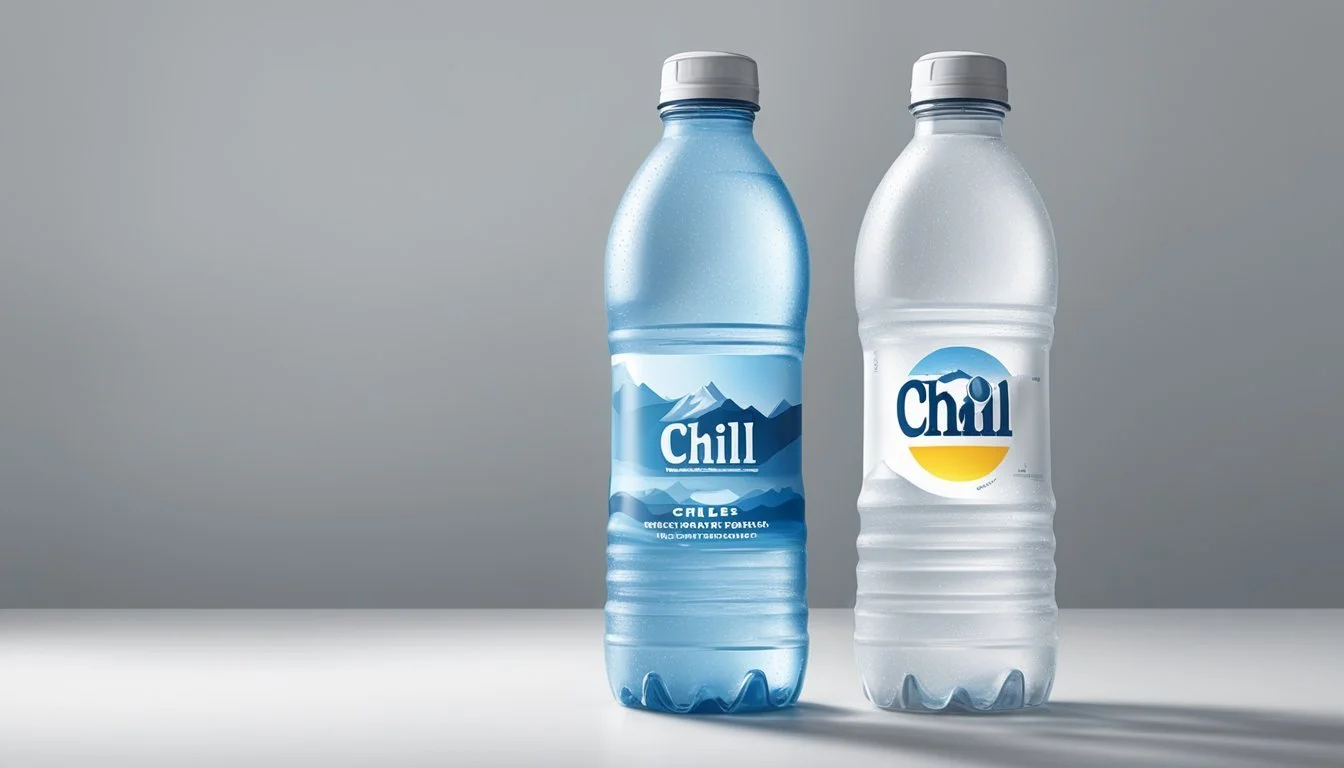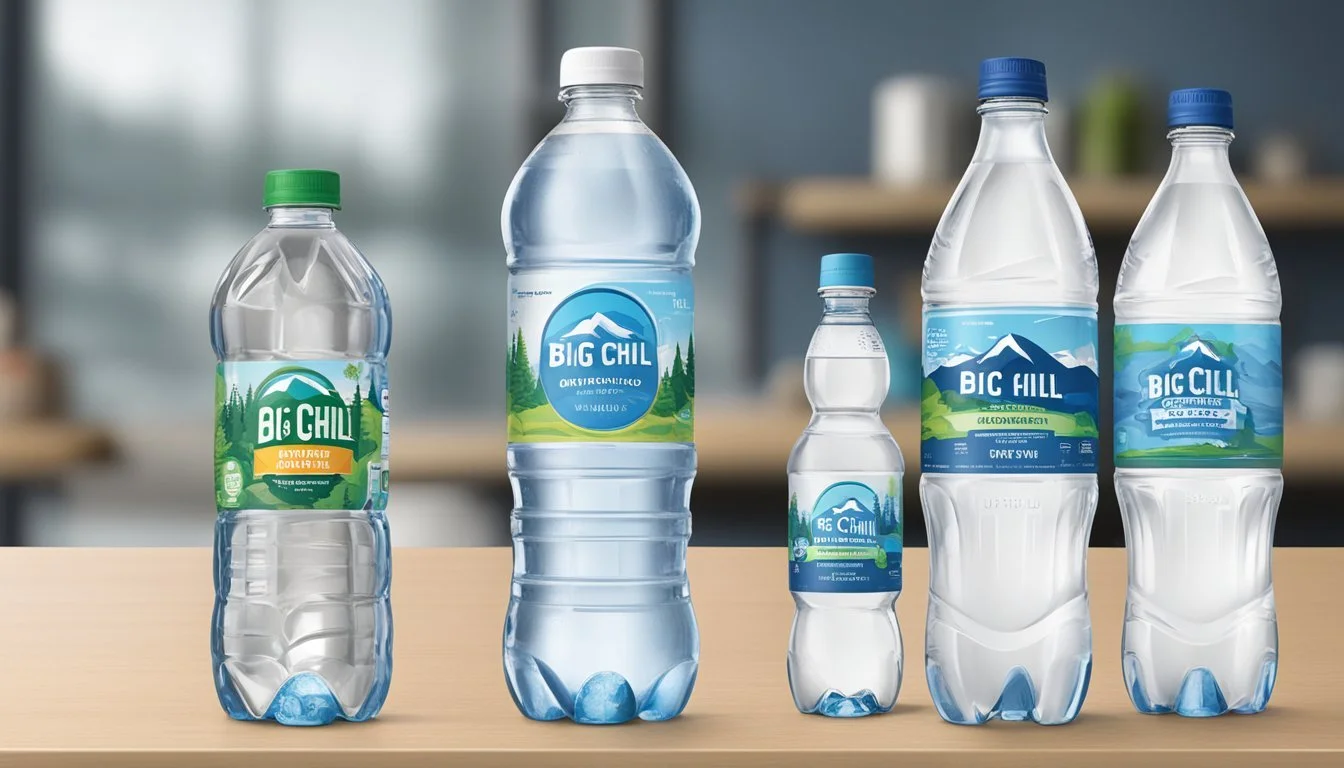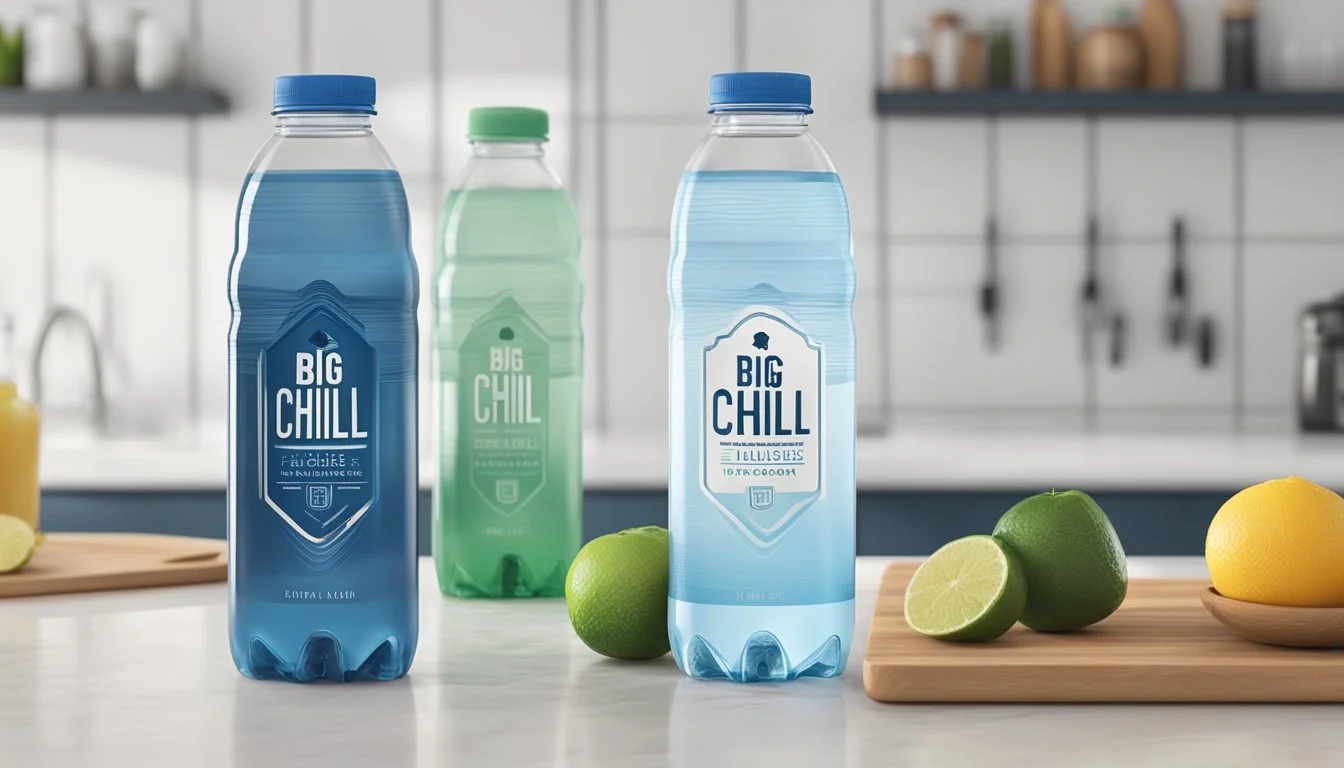Big Chill vs. Simple Truth
A Comparative Review of Bottled Water Quality
When it comes to choosing between Big Chill and Simple Truth bottled water, consumers often wonder which is the better option. Both brands offer purified water that aims to provide a clean and refreshing drinking experience. However, there are distinct differences that set them apart.
Big Chill, distributed by CVS Pharmacy, is known for its neutral taste, making it a suitable choice for those who prefer water without any noticeable flavor. On the other hand, Simple Truth, a brand by Kroger, also provides reliable purity and may appeal to those who value sustainable packaging.
With the growing awareness of water quality and the presence of contaminants in various brands, it's essential to know what you are drinking. This comparison will delve into the specific attributes of both Big Chill and Simple Truth, helping you make an informed decision about your next bottled water purchase.
Comparison of Big Chill and Simple Truth
When comparing Big Chill and Simple Truth bottled waters, several aspects should be considered: taste, sourcing, packaging, and cost.
Taste:
Big Chill offers a clean and crisp taste, catering to those who prefer a neutral flavor.
Simple Truth provides a slightly fresher taste with subtle mineral notes, appealing to those seeking a more natural palate.
Source:
Big Chill sources its water from natural springs. This ensures a high-quality product with consistency in mineral content.
Simple Truth prioritizes organic and eco-friendly sources. Their water is often marketed as being naturally filtered and minimally processed.
Packaging: Big Chill uses sturdy plastic bottles that are 100% recyclable. This makes them convenient for travelers and office use.
Simple Truth opts for more environmentally-friendly packaging. They incorporate plant-based materials, reducing plastic use and promoting sustainability.
Cost: Big Chill is positioned at a mid-range price point, providing good value for the quality offered.
Simple Truth tends to be slightly more expensive. This reflects their investment in eco-friendly practices and sustainable sourcing.
Key Points:
Taste: Big Chill (neutral), Simple Truth (fresh, mineral notes)
Source: Big Chill (natural springs), Simple Truth (eco-friendly sources)
Packaging: Big Chill (recyclable plastic), Simple Truth (plant-based materials)
Cost: Big Chill (mid-range), Simple Truth (higher due to sustainability efforts)
These points can help consumers decide based on their preferences for taste, environmental impact, and budget.
Health Perspectives on Bottled Water Consumption
Understanding the health implications of bottled water includes evaluating its safety, nutritional content, and broader public health impacts. This section examines these aspects in detail.
Safety and Contaminants
Bottled water is often perceived as being a purer alternative to tap water. Studies indicate that it may still contain contaminants such as microplastics, lead, and various toxins. For instance, research shows a liter of bottled water can harbor up to 240,000 nanoplastic particles.
Regulatory bodies like the EPA and FDA set safety standards for drinking water. Yet, discrepancies in enforcement and monitoring can result in variable levels of contaminants. Health risks from prolonged exposure to these contaminants include cancer, cardiovascular diseases, and adverse neurodevelopmental effects in children.
Nutritional Content Comparison
The nutritional profile of bottled water varies significantly depending on the source and mineral content. Mineral water contains essential minerals such as calcium, magnesium, and potassium, which can contribute positively to an individual's health.
In contrast, distilled or purified water might lack these beneficial minerals but also has fewer contaminants. It’s important for consumers to consider these differences based on their specific health needs and dietary requirements. Comparing labels and understanding mineral content can help in making an informed choice.
Public Health Implications
From a public health perspective, widespread bottled water consumption has both benefits and drawbacks. The convenience of bottled water can promote better hydration habits. However, the environmental impact and resource usage are substantial concerns.
Bottled water production and disposal contribute to pollution and resource depletion. Moreover, reliance on bottled water can undermine confidence in public water supplies, which are subject to rigorous safety standards set by the EPA. This dynamic may divert essential resources and attention away from improving municipal water quality, impacting public health efforts.
In sum, while bottled water can be beneficial for individual health, ensuring its safety and considering its nutritional advantages and broader public health implications are crucial.
Taste Assessment
Both Big Chill and Simple Truth bottled waters have their unique characteristics when it comes to taste. To determine which one stands out, both blind taste tests and expert evaluations offer valuable insights.
Blind Taste Tests
In various blind taste tests, participants sampled Big Chill and Simple Truth without knowing which brand they were drinking. This method ensured unbiased opinions and honest feedback based solely on taste sensations.
Participants reported that Big Chill had a crisp and refreshing quality. Some noted a slight mineral aftertaste, which added to its character. In contrast, Simple Truth was often described as having a smoother, more neutral flavor. A few tasters mentioned a subtle sweetness, making it easy to drink.
A notable observation was the difficulty in distinguishing between the two in a blind setting. Many could not accurately identify the brands, indicating similar quality levels. This highlights the subjectivity of taste and the importance of personal preference.
Water Sommelier Insights
Water sommeliers bring a depth of expertise to the assessment of bottled waters. According to expert evaluations, Big Chill's mineral composition contributes to its distinctive taste. The slight mineral presence can be appealing to those who prefer a more pronounced flavor profile.
Simple Truth, on the other hand, is praised for its purity and balance. Experts often highlight its clean taste, free from any overpowering mineral notes. This makes it a versatile choice, suitable for a variety of palates.
In professional settings, Simple Truth might be favored for its neutrality, especially when paired with food or fine dining. Big Chill's characterful flavor could stand out more in casual or solo drinking situations. The expertise of water sommeliers helps in pinpointing these nuanced differences, elevating the appreciation of each brand's unique qualities.
Production and Filtration Methods
Each brand has unique practices for ensuring water purity and quality. Various filtration methods, sources of water, and regulation standards contribute to the final product that consumers purchase.
Filtration Techniques and Purity
Filtration techniques significantly affect water quality. Reverse osmosis is a popular method that removes contaminants by forcing water through a semipermeable membrane, often resulting in virtually contaminant-free drinking water. This process can eliminate impurities such as chlorine, microplastics, and heavy metals.
In contrast, simpler methods like carbon filtration primarily focus on improving taste by reducing chlorine and certain compounds. While these methods are effective to some extent, they don't offer the same level of purification as reverse osmosis.
Big Chill and Simple Truth use different filtration methods. Big Chill emphasizes using advanced techniques like reverse osmosis to ensure high purity levels, offering a cleaner and safer drinking experience. Simple Truth may employ a mix of filtration methods but focuses heavily on maintaining a natural taste.
Spring Water Versus Purified Water
Spring water and purified water are two main types of bottled water you’ll find. Spring water is sourced directly from natural springs and is minimally processed, ensuring it retains natural minerals. This makes it appealing for those who prefer a more natural taste.
Big Chill sources its spring water from protected locations, ensuring that it remains clean and free from significant contamination. Purified water, on the other hand, undergoes extensive filtration (e.g., reverse osmosis) to remove contaminants. Simple Truth offers purified water, emphasizing the process over the source to guarantee a pure product.
The choice between the two often depends on consumer preferences for natural minerals vs. ultra-purified taste.
Industry Regulation Standards
Industry standards are critical in maintaining water quality. Both brands must adhere to regulations set by the Environmental Protection Agency (EPA) and other relevant bodies, ensuring water is free from harmful contaminants.
Bottled water must comply with stringent testing for substances like chlorine, heavy metals, and microplastics. The EPA mandates that bottled water undergo regular quality checks; any deviation can result in product recalls or fines.
Big Chill follows these regulations rigorously, often exceeding minimum standards to ensure consumer safety. Simple Truth is equally compliant, focusing on maintaining high quality through systematic checks and balanced mineral content. This adherence ensures that consumers receive safe, clean, and reliable drinking water.
Economic Aspects and Brand Value
Exploring the economic aspects and brand value of Big Chill and Simple Truth involves looking at their cost, marketing strategies, and overall market presence. Each brand has unique strengths and weaknesses that influence their position in the market.
Cost Comparison and Affordability
Big Chill and Simple Truth have distinct pricing strategies that appeal to different consumer segments. Big Chill is often viewed as a premium option, frequently priced higher due to its marketing as a high-quality product with unique sourcing attributes. Consumers may find it more expensive but associate the higher price with better taste and purity.
Simple Truth, a private label brand from Kroger, targets cost-conscious shoppers seeking a balance between price and quality. It is generally more affordable than Big Chill. The brand's pricing strategy relies on its distribution through Kroger's vast retail network, offering competitive prices that attract budget-sensitive consumers.
The pricing alignment with brand positioning – premium versus budget-friendly – influences consumer choice and brand loyalty significantly.
Brand Marketing and Consumer Trust
Big Chill employs robust marketing strategies that highlight the purity and source of its water. Its marketing campaigns often leverage themes of natural origins, with an emphasis on unique characteristics that set it apart from other brands. This strategy appeals to consumers who prioritize quality and are willing to pay a premium for perceived exclusivity.
Simple Truth's marketing focuses on transparency and consistency. By positioning its products as clean, simple, and trustworthy, it capitalizes on Kroger's established reputation. The brand emphasizes its commitment to sustainable practices and consumer well-being, building trust through clear labeling and honest communication.
Both brands use targeted marketing to build consumer trust, but their approaches differ: Big Chill leans on premium quality appeals, while Simple Truth emphasizes affordability and ethical practices.
Market Share and Popularity
Big Chill holds a niche market share, appealing to discerning consumers willing to invest more in bottled water. Its smaller market presence is compensated by strong brand loyalty among its users. The brand's limited distribution channels contribute to its exclusivity, further enhancing its premium status.
Simple Truth benefits from Kroger's extensive retail network, giving it a significant market presence and popularity. Its wide accessibility and broad appeal to cost-conscious consumers contribute to its substantial market share. The brand's alignment with Kroger's strong consumer base ensures steady and widespread popularity.
While Big Chill focuses on a targeted, high-value segment, Simple Truth leverages broad accessibility and affordability to maintain a strong position in the bottled water market.
Consumer Usability and Convenience
Big Chill and Simple Truth offer distinct advantages and disadvantages when it comes to consumer usability and convenience. Key factors include packaging, portability, accessibility, and local availability.
Packaging and Portability
Big Chill typically uses larger, more durable bottles, which can be beneficial for refilling throughout the day. These bottles often have a secure cap and ergonomic design, making them ideal for extended use. Simple Truth, on the other hand, often comes in smaller bottles, which are lightweight and easy to carry. This can be advantageous for quick trips or for individuals on-the-go.
Both brands use plastic for their packaging, but Big Chill's more robust design can be reused multiple times before recycling. Simple Truth’s bottles are convenient for single-use but contribute more to plastic waste if not recycled properly. When it comes to portability, Simple Truth’s smaller size wins for ease of carrying, while Big Chill’s design supports longer use.
Accessibility and Local Availability
Big Chill is widely available in supermarkets and convenience stores across various regions, ensuring consumers can easily find it. The brand's accessibility makes it a reliable choice for consumers who prioritize consistent availability. Simple Truth is often found in health-focused stores and larger retail chains. This can make it more accessible to health-conscious consumers and those shopping in large grocery outlets.
Both brands are generally accessible, but their availability may vary based on local market distribution. Big Chill also offers the added convenience of larger volume options, suitable for families or bulk purchasing. Simple Truth may appeal more to individual consumers or those seeking quick, single-serving options.
Table comparing availability:
Brand Store Type Common Locations Big Chill Supermarkets, Convenience Stores Various regions Simple Truth Health Stores, Large Retail Chains Larger grocery outlets
These characteristics make both Big Chill and Simple Truth viable options for consumers, depending on their specific needs and preferences.
Additional Considerations in Choosing Bottled Water
When selecting bottled water, factors like flavoring options, carbonation, and source type can significantly impact the consumer's choice and experience.
Flavored versus Natural Options
Flavored bottled water offers a variety of tastes for those who find plain water unappealing. These waters often include natural fruit essences and artificial flavorings. For consumers watching their calorie intake, it's crucial to check for added sugars or sweeteners in flavored options.
Natural spring water provides a pure taste with no additives, appealing to those prioritizing natural products. It also commonly lacks preservatives. Choosing between flavored and natural options largely depends on personal taste and dietary considerations.
Overly flavored waters might contain ingredients that some consumers prefer to avoid for health or dietary reasons. Therefore, the choice between flavored and natural waters ultimately comes down to personal taste and nutrition requirements.
Carbonated versus Still Water Preferences
Carbonated bottled water appeals to those who enjoy the crisp, fizzy texture reminiscent of soft drinks. This type of water is often marketed as a healthier alternative to sugary sodas. Some brands enhance carbonation naturally through mineral spring sources, while others add it artificially.
In contrast, still water offers a smooth, flat taste and is typically the go-to for hydration without any fizziness. It is often preferred for its simplicity and ease of consumption without the bloating that can accompany carbonation.
Consumers might select carbonated water for its unique mouthfeel and ability to satisfy cravings for carbonated beverages. Meanwhile, still water is favored by those seeking straightforward hydration. When choosing between these options, individual preference for texture and hydration levels play key roles.





